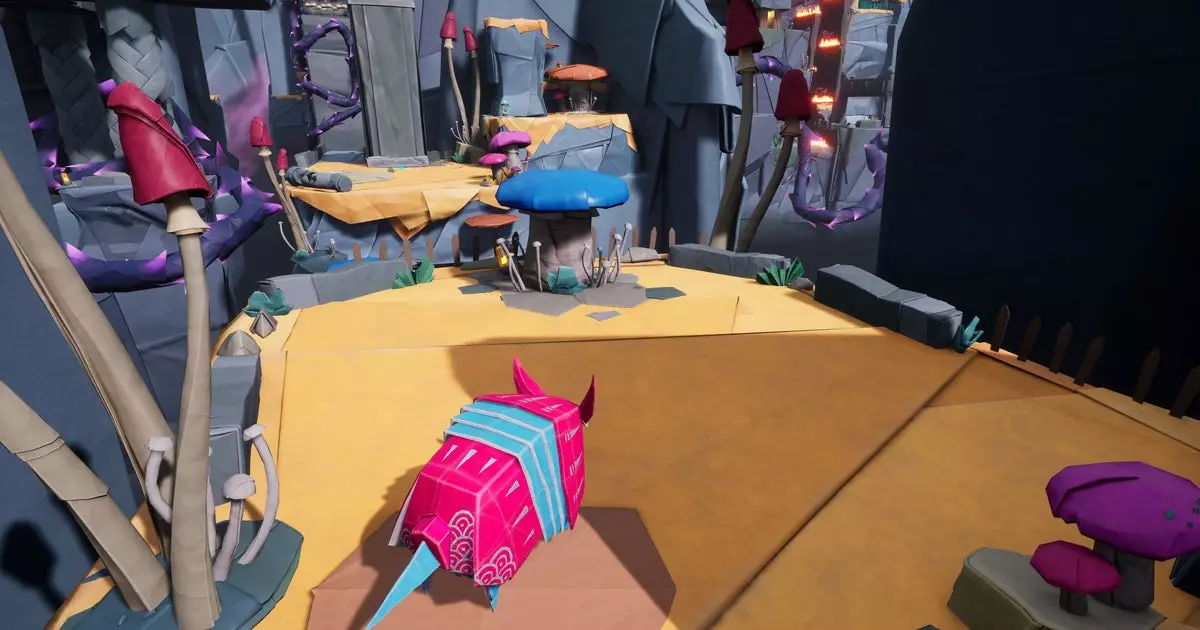In the realm of video game narratives, few concepts are as strikingly paradoxical as the juxtaposition of digital creations that advocate for the traditional art of paper. Hirogami, a new 3D action platformer, invites players into a whimsical world where they embody a paper protagonist, Hiro, embarking on a quest to restore balance to an environment plagued by digital “blight.” This striking irony surfaces when one considers the inherent contradiction: a video game that elevates the beauty of paper art while simultaneously existing within the very digital medium it critiques. One cannot help but wonder if Hirogami is more than just a game—it presents itself as a commentary on the ongoing tension between digital and tangible forms of art.
Hirogami is marketed as an homage to origami, the intricate Japanese art of paper folding. Players control Hiro as he morphs into various forms, including an agile frog and a powerful ape, all while battling the mind-warped inhabitants of a world derailed by digital corruption. The narrative props up a thematic exploration of fragility, not just in the physicality of paper but also in the delicate balance of the natural world. The description on the Steam page captures this sentiment, suggesting that players will traverse a landscape where every facet is meticulously crafted to reflect the transient nature of paper. Yet, one has to question: can a game made of ones and zeros genuinely convey appreciation for the ephemeral quality of paper?
The gameplay mechanics reveal a vibrant combination of creativity and interaction. Players can execute a range of magical transformations with Hiro, allowing them to slide under obstacles, engage with enemies, and navigate perilous chasms as a paper plane. While the concept of mobility adds a layer of depth, it circles back to the irony of a digital medium celebrating the fragility of paper through mechanically complex interactions. The charm of Hirogami lies in its potential to invoke nostalgia, as players may reminisce about the simplicity of paper crafts contrasted with the advanced technology at play.
However, a glaring oversight could leave players wanting more. In a world deeply rooted in the art of origami, the absence of mini-games that reflect the folding process detracts from the overall experience. If Hirogami aims to honor the ancient craft, providing a way for players to engage with its methods actively would not only enhance immersion but create a more enriching environment that embodies the spirit of origami.
Though Hirogami employs an instrumental soundtrack and boasts a lush aesthetic—factors that elevate it within the landscape of indie gaming—the game struggles to balance its dual identity. While promoting paper art, it paradoxically embodies the very technological advancements that many claim threaten traditional forms. As individuals bemoan the decline of print and physical media, Hirogami’s existence as a digital platformer challenges these notions. By illustrating this friction, the developers might unwittingly highlight the need for harmony between competing art forms, rather than pitting them against each other.
Moreover, the idea that games may one day explore the nostalgia for print media, as suggested in the original narrative, opens the floor for an interesting debate. If future generations find joy in eluding digital distractions through nostalgic retrospectives of media long gone, how might they perceive the realities of the digital age that inspired it? Hirogami serves as an intriguing case study for this conversation, sparking awareness about the fleeting balance between innovation and tradition.
As we look forward to the release of Hirogami in 2025, it raises vital questions about the evolution of artistic mediums. Can virtual experiences effectively commend and preserve physical art forms? Will players navigate this landscape with genuine appreciation or find themselves more entangled in digital distractions? As the boundaries between paper and pixels continue to blur, Hirogami stands at the intersection of admiration and irony, inviting players to reflect on the nature of art itself while embarking on an exuberant adventure.

